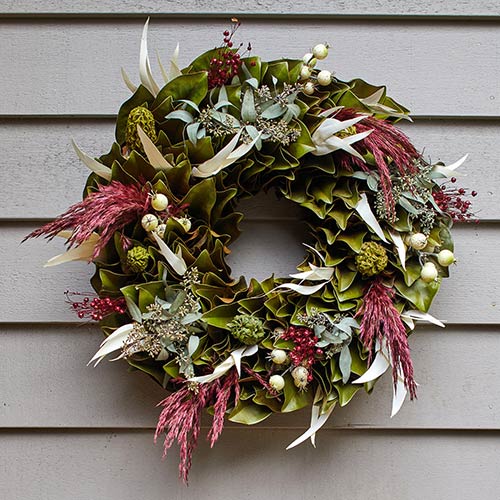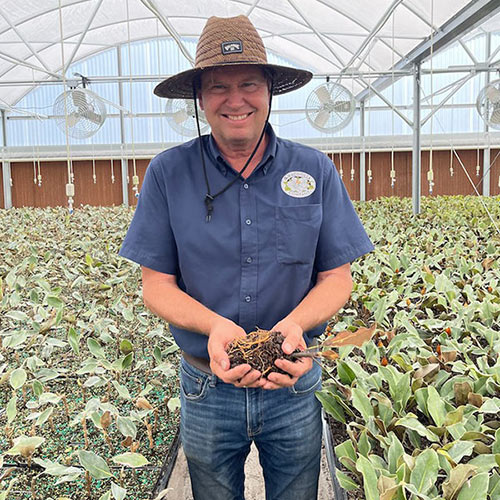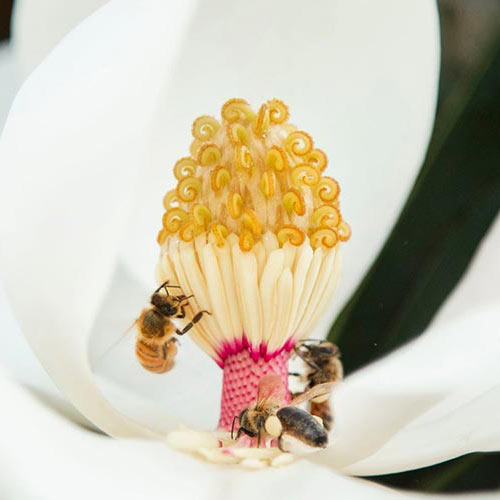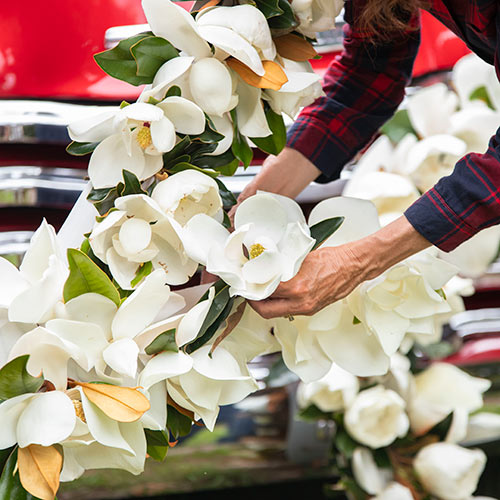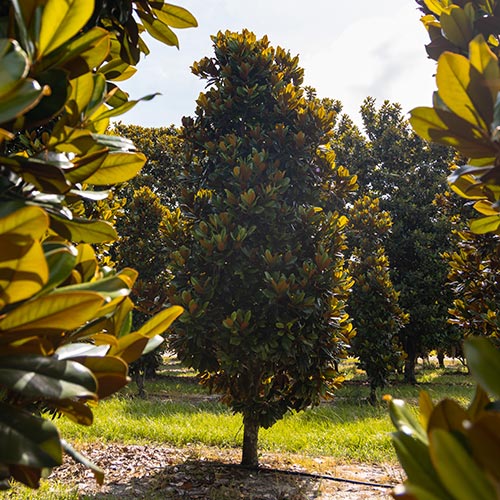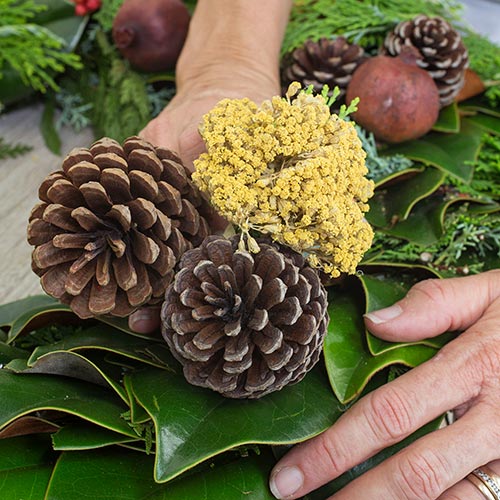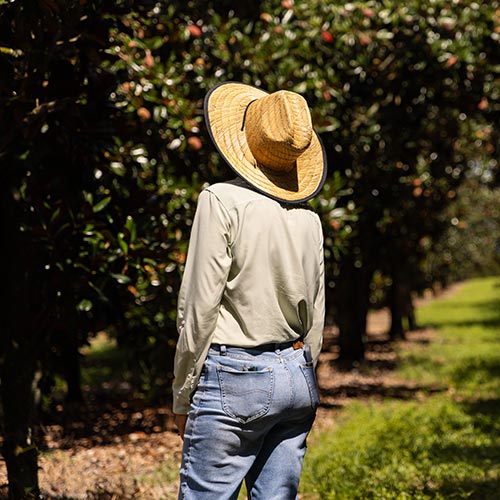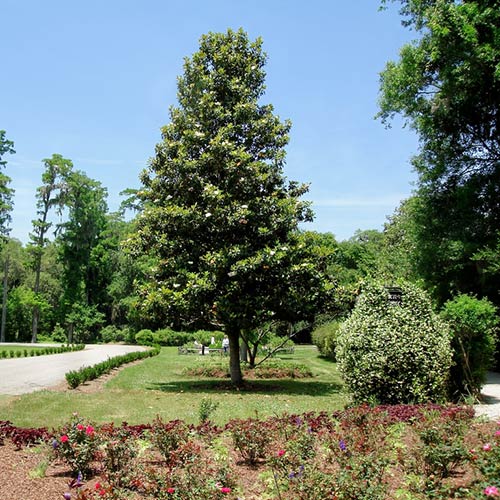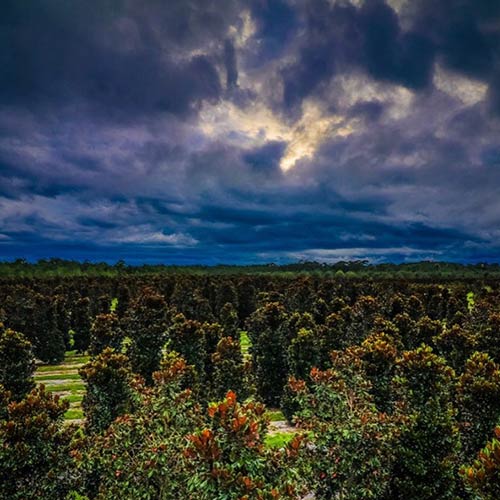Caring for Magnolia Trees in the Fall: 3 Things to Know
October 23rd, 2025
Fall Brings Change
For the weather, our trees, and even for us, too. We’re a little older, a little wiser, and our roots run just a little deeper than they did last year.
Whether you’re a seasoned gardener, a homeowner, or a new plant parent, you could probably guess that the changing of the seasons means changing how you care for your leafy friends.
At The Magnolia Company, we specialize in everything magnolia (shocker, right?). While all of the advice in this blog is expertly tailored to magnolia trees and the folks who love caring for them, what works for one type of tree may also be suited to another. Take what fits and leave what doesn’t.
1. Water Less
With daylight becoming more and more of a precious resource and temperatures taking a break from scorching the earth, your magnolia trees don’t need as much water as they did in the middle of summer.
Finding a watering schedule that works for your trees will take a little trial and error if this is your first time being a magnolia gardener. Start by slowly scaling back your summer watering schedule. If you were watering your trees once a week in summer, try watering every week and a half. The closer we get to winter, the more time you can put in between your waterings. By December, it’s normal to put 2 to even 3 full weeks in between waterings. Keep an eye on your tree’s leaves. If you notice significant yellowing or leaf drop, adjust your watering schedule.
Most species of magnolia trees are evergreen, so they’ll maintain their foliage during winter. That said, you won’t see much in the way of new growth. Like plenty of animals, the tree hibernates (or rather, goes dormant) in the cooler months to conserve its energy and resources. The tree will take the water you give it and put it toward expanding its root system, which is the tree’s primary winter project. Root growth is more efficient than leaf growth, so it doesn’t require nearly as much water.
A Little Note on Leaf Drop
Magnolias do undergo light seasonal sheds, but not to the same scale as their deciduous tree cousins (the ones whose leaves erupt in shades of yellow and red before becoming brown and dropping). It’s normal to notice a slight uptick in the amount of leaf shed around this time of year, but your tree should still retain the majority of its foliage.
The leaves that do drop are likely at the end of their life cycles, so they drop to make room for new eventual springtime growth.
A good analogy for this is the hair on your head – even with a full head of hair, it’s totally normal to find hair shed in your hair brush. It’s just part of your body’s cycling!
2. Do. Not. Prune. (Yet)
Your tree is getting ready to take its long winter’s nap… but it’s not there yet.
Hold on to your urge to prune until mid winter, when your magnolia is fully dormant. The cold weather reduces the risk of fungal infections, and the tree will sustain less trauma/stress during the pruning process. While you can perform light pruning on your tree throughout the year as needed, be patient and save the big pruning projects for winter.
Pruning is more like minor surgery for a tree than it is a haircut. Make sure it’s asleep before you pick up your gardener’s scalpel.
Seriously, unless the tree sustained damage from a weather event (we’d call that an emergency that does require pruning), put the pruning shears and chainsaw down.
3. Mulch
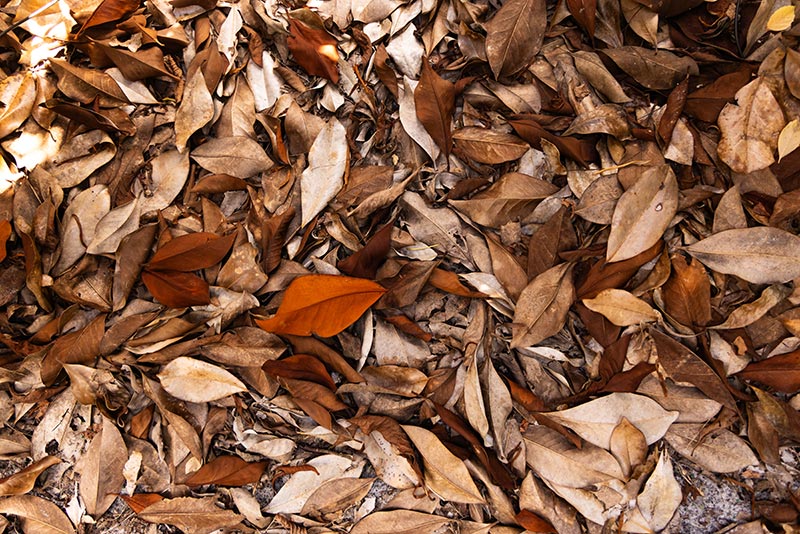
Mulch serves a handful of purposes in the gardening world. It can help retain water, which is critical in the summer sun. It also helps choke out weeds that are quick to take advantage of the care and resources you dedicate to your tree. In cooler months, it still does those things with one added bonus: insulation.
You don’t need to go call your local garden center and buy a bunch of mulch. Instead, use the leaf drop you have to your advantage! There are plenty of excellent nutrients available in the leaves and seed pods that your magnolia tree shed. Rake them into a circle surrounding your tree. The idea is to cover the root ball of your tree. Do take care to avoid piling leaves up against the trunk, though. Aim to leave a few inches of space between the trunk and where your natural leaf mulch begins to encircle the magnolia.
Bonus: Collect the Pods!
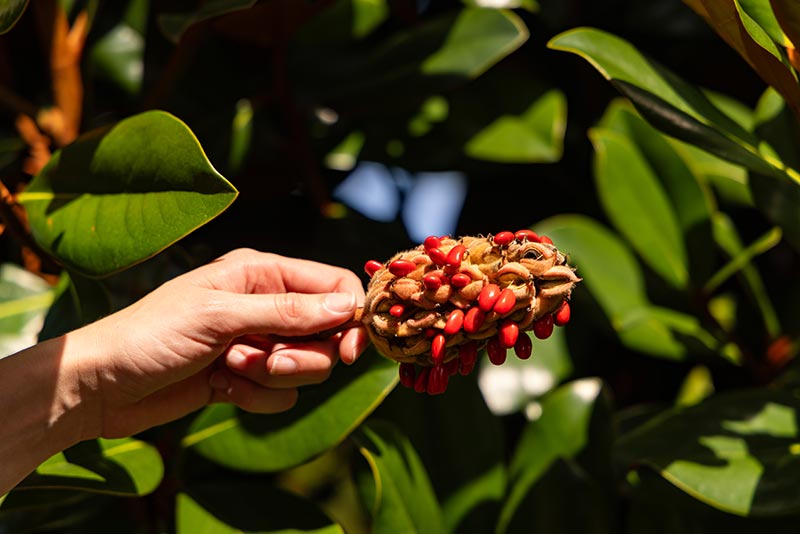
While some trees produce nuts, magnolia trees produce pods! These pods contain bright ruby red seeds. Harvest the seeds and plant them come spring for a family friendly adventure with nature! In order to maximize your chances of getting a healthy sprout, you’ll want to remove the red fruit from around the seed, then store the seeds in the refrigerator for the winter.
If you’re not the type of person who wants more trees, that’s fair. You can also shake the seeds out of their pods and hang the empty pods in a cool, dark, dry place to dry out. A quick scroll through Pinterest or our product catalog will give you all the inspiration you need to get crafty and in the seasonal spirit. We frequently use magnolia pods as natural accents in our wreath collections for their fun shape and texture. Besides, when nature gives with both hands, we’re happy to graciously accept the generosity!
A quick list of crafty ideas to get you started on a DIY magnolia seed pod project:
- Wreaths
- Garlands
- Bouquet accents
- Ornaments
- Mailbox decor
- Table centerpiece
- Doorknob charm
- Potpourri
Happy Harvest Season!
If you’ve got questions, we’ve got answers. Email or call us with your magnolia questions any time. You’ll talk to a real person and get expert advice to help you grow your green thumb!
Recent Articles
